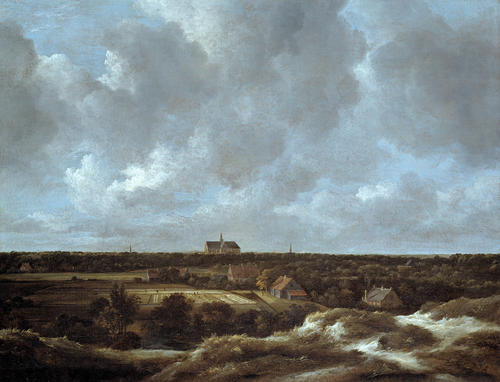Selective Naturalism

…it is widely recognized today that a painted landscape, however realistic in appearance, is never a pure copy of nature and therefor can never be rendered value free. Implied in the artist’s choice of motifs and his pictorial representation is a certain view of reality. This is conditioned by the many factors of that make up his working context, including the artist’s personal temperament, prevailing artistic conventions, and other cultural values. Together these provide a conceptual framework that shapes the artist’s perception and representation of nature. Earlier criticism of Dutch landscape painting has taken insufficient account of such matters, both overlooking factors that influenced the artist’s perceptions of nature, and ignoring the attitudes and assumptions of the seventeenth-century beholder.
The tendency in current criticism is to accentuate one of two extremes: while some writers still see Dutch landscape painting in terms of pure description and aesthetic delight, others have confronted this with an iconological approach, in an attempt to retrieve whatever meaning or associations may be embedded within Dutch landscapes. However, it may be that a concern with aesthetic delight and the presence of meaning, or of a particular attitude towards nature, may well prove not so much mutually exclusive as intimately related. It is certainly fitting to ask how deliberately and by what means such attitudes were embodied in paintings, and the problem also remains of how to identify them.
– Walford, E. John. Jacob van Ruisdael and the perception of landscape. Yale University Press, 1991. Pgs 16-17.
I’m interested in the parallels between realistic landscape painting and how a writer renders “reality” hoping to show whatever meaning may be found there. John Walford calls this selective naturalism. I think it would be valuable to study these Ruisdael paintings and his tradition (Dutch landscape painting in a Dutch Reformed culture) alongside Marilynne Robinson or Nathan Poole (I’m working on a review of his fantastic Father Brother Keeper, so his methods are on my mind).
Maybe put Amy Greene in this slot as well. I’m finishing her book Bloodroot and I haven’t gathered my thoughts on it yet. But it is beautiful and utterly engaging.